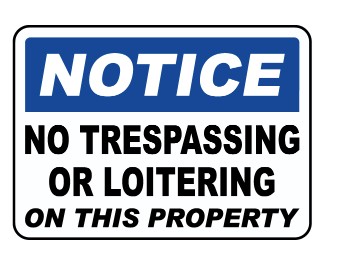
A recurring theme when our team speaks with shopping center property owners these days is the impact of individuals loitering at their property. This includes instances of unhoused individuals sleeping on-site, people experiencing mental challenges loitering and scaring customers, panhandling activity and individuals living in their vehicles on the premises. These situations affect the overall shopping experience for customers and create operational challenges for landlords.
At Progressive Real Estate Partners it is important to us that our clients have a positive experience with their property as this ultimately improves its value and makes it easier to lease and/or sell when such services are required.
Here are 7 ideas that you can put into practice if this is a problem at your property. They are not full proof but implementing them should help make your property a safer and more inviting place to do business.
1. Communicate with Law Enforcement: Each city has different rules and regulations that govern what the police are and are not allowed to do before they can take action on your behalf. Contact the police department within the location of your shopping center and ask for their advice. In some cases, your property will require specific signage before they can take action, or they may require you to sign a document that authorizes them to remove people from your property without you being present.
By understanding the rules, you can partner with local law enforcement and understand what you have to do to allow them to help you. You will also understand the limitations that limit their ability to help you solve the problem of unwanted individuals at your property.
2. Improve Property Lighting: Most shopping centers, especially older properties do not have good lighting. If you have not converted to LED lighting yet, this is a good place to start. Not only will you save on maintenance and electrical costs, but LED lighting can be much brighter. Furthermore, adding lighting to dark areas will make it less comfortable for people to loiter and sleep at your property. You can also install motion sensitive lighting that is very bright to startle unwanted individuals at your property and make them aware that they are being watched.
3. Enhance Security: For most properties under 100,000 SF, it is not practical to hire a security service. It is too expensive and furthermore, in many cases security guards are ineffective. We have observed instances of them sleeping in their cars, hanging out in vacant units and overall not being very helpful.
If your budget does not allow for quality security services, there are companies that install camera systems and remotely monitor these systems. When they see an actionable item, they can call the police, provide video and in some cases communicate to the trespasser that they need to leave.
The least expensive (and likely least effective) option is to install security cameras that are monitored by an on-premise recording device that requires an internet connection. Hopefully the presence of these cameras helps deter unwanted visitors to your property.
4. Improve Landscape and Design: Flat surfaces including planter boxes, retaining walls, and benches encourage people to sleep and sit on them. Furthermore, your property’s landscaping may encourage people to take refuge at your property. Landscaping needs to be maintained in such a way that it does not create a safe area for unwanted individuals to spend their days and nights.
5. Regular Maintenance: Remove graffiti, mattresses, boxes, and other items that make the property look unmonitored. There may be some regulations regarding disposing of people’s property so make sure you are aware of the laws so you don’t get in trouble.
6. Tenant Communication: Many owners do not want to engage their tenants because they feel like they are announcing that there is an issue. If you know there is a problem, I am confident that your tenants already know there is a problem. Informing them of the actions you have taken to address the issue and then encouraging tenants to call the police when they observe a problem can help. Also, make sure tenants are not taking actions that encourage the problem.
Recently, we encountered a situation involving one of the national pizza take out chains. They were storing plastic cases for their soda bottles behind their premises. These functioned like giant legos and unhoused individuals were using them to raise their possessions off the ground and then stacking their mattress on top creating temporary bed frames. A call to the corporate office resulted in the tenant immediately storing the soda cases inside their premises which solved the problem.
7. Lock Trash Enclosures: Trash enclosures can become unintended hiding spots for individuals or even makeshift bathrooms. If your trash enclosure has a solid gate, consider changing to one that has a mesh design and allows people to see in from the outside. Many tenants aren’t good about locking trash enclosures due to concerns about what may be on the other side of the closed door and unfortunately getting them to lock and unlock an enclosure is very challenging from what we have been told. If you have found effective ways to get tenants to cooperate with keeping the enclosure closed and locked (and not having the lock constantly disappear), please let us know.
We hope that at least a few of the ideas in this blog will help you protect your retail property. If you have any other suggestions that were not mentioned, please email them to me at brad@progressiverep.com. I’m always looking for new ideas and input.